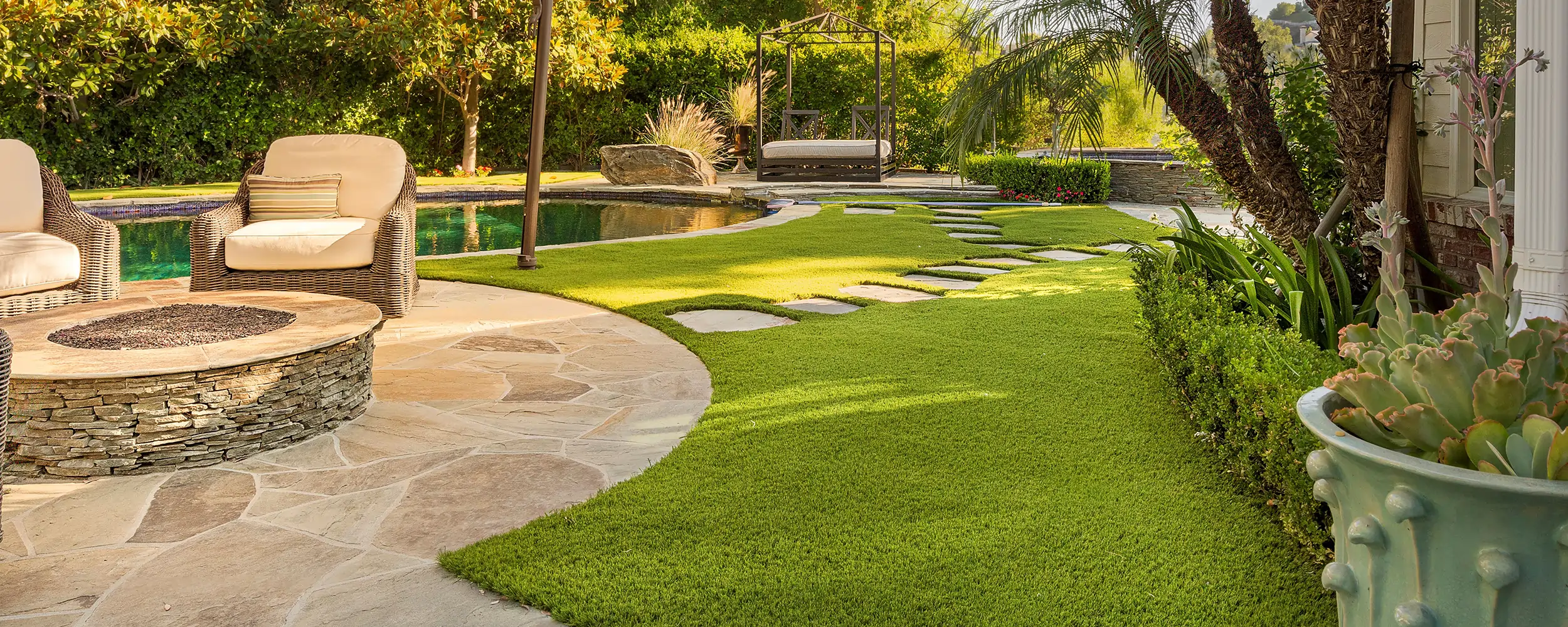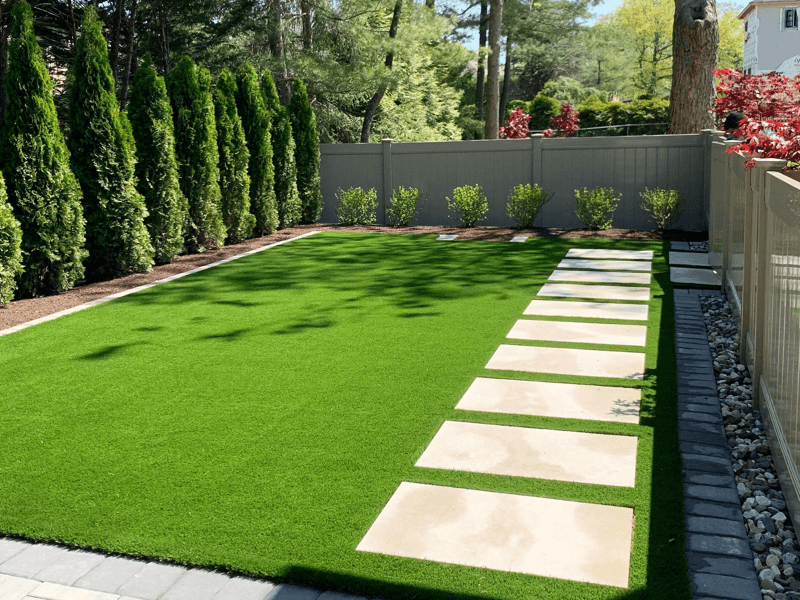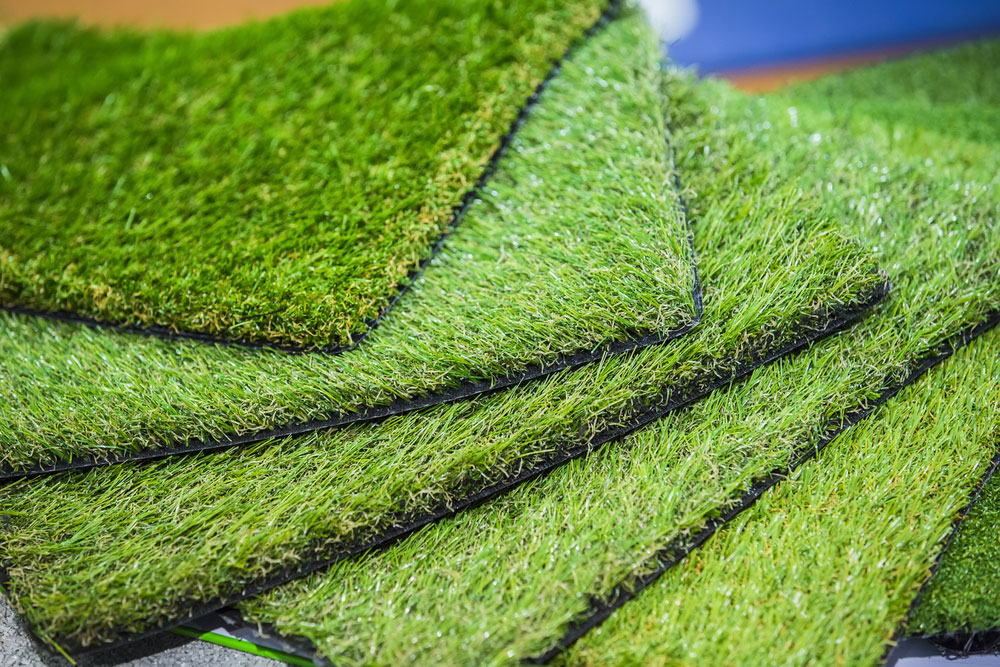Expert Arizona Turf Providers Offering a Natural-Looking Lawn Alternative
Explore the Environmental Perks of Opting for Synthetic Grass Solutions
The adoption of man-made lawn solutions presents a compelling chance to resolve pressing ecological challenges. By significantly minimizing water usage and reducing the application of harmful chemicals, these alternatives not only promote lasting landscaping but also safeguard regional environments. The reduced carbon footprint linked with lowered maintenance tasks contributes to an extra sustainable approach to land monitoring. The effects of these benefits extend past simple preservation efforts, increasing questions regarding their long-term influence on habitat conservation and general ecological balance. Discovering these dimensions discloses an intricate interplay worth taking into consideration.
Water Conservation Conveniences
One of one of the most considerable advantages of artificial turf is its capability to save water. Traditional turf yards need substantial watering, specifically in locations vulnerable to drought or water limitations. In comparison, fabricated turf does not require watering, substantially minimizing the general demand for water sources. This function is especially valuable in arid areas where water shortage is a pressing issue.
By getting rid of the requirement for normal watering, artificial grass adds to sustainable landscape methods and helps mitigate the environmental influence of too much water consumption. Additionally, the preservation of water encompasses the reduction of drainage, which can bring about soil disintegration and river pollution.
Furthermore, the installation of synthetic lawn permits homeowners and towns to designate water sources more successfully, concentrating on vital uses such as drinking water and agriculture. The change in the direction of man-made turf not only promotes responsible water usage but also aligns with more comprehensive ecological objectives focused on maintaining natural deposits.
As communities progressively focus on sustainability, the water preservation advantages of synthetic grass present a compelling case for its fostering in business and household landscape design projects.
Lowered Chemical Usage
The change to man-made grass considerably reduces the reliance on chemical therapies generally used in all-natural yard maintenance. Standard lawn administration normally includes the application of herbicides, chemicals, and plant foods to advertise growth and control pests. These chemicals can position threats to human health and wellness, local wild animals, and the setting, contributing to dirt and water contamination.
On the other hand, synthetic grass eliminates the requirement for these hazardous compounds. Once set up, it requires very little maintenance, mainly being composed of routine cleaning and infrequent infill replenishment. This reduction in chemical use not just profits the instant setting but additionally adds to wider ecological stability. By decreasing the launch of artificial substances into the ecosystem, synthetic grass advertises much healthier dirt and water supply.
Furthermore, the absence of chemical runoff connected with fabricated turf installations aids protect local waterways from pollution, sustaining marine life and keeping biodiversity. Arizona turf. As communities progressively prioritize sustainable practices, selecting fabricated lawn offers a sensible remedy that aligns with ecological preservation objectives. Through this shift, homeowner can take pleasure in lush environment-friendly areas without jeopardizing ecological health, paving the way for a more lasting future
Lower Carbon Footprint

Additionally, the installment of man-made lawn can cause considerable water conservation. All-natural lawns require substantial amounts of water for irrigation, which not just includes in the carbon footprint connected with water removal and treatment but additionally strains local water resources. On the other hand, synthetic grass requires minimal upkeep, requiring no watering, therefore considerably lowering water use and its connected power costs.
Additionally, the durability of synthetic lawn adds to its lower carbon impact. With a life expectancy of up to 15 years or more, the need for frequent replacements is lessened, resulting in less waste and reduced power consumption in manufacturing and getting rid of typical grass options. On the whole, artificial turf presents a sustainable choice for eco aware landscape design.
Environment Conservation
Environment conservation is an important factor to consider in the argument over landscaping selections, specifically when contrasting synthetic grass to all-natural lawn. Natural lawn lawns frequently call for extensive upkeep, including the use of pesticides, plant foods, and herbicides, which can negatively affect regional environments. These chemicals can leach into the dirt and waterways, damaging native flora and fauna and disrupting regional habitats.
On the other hand, man-made grass presents a chance to reduce the ecological impact of landscape design. By choosing artificial turf, home owners can lessen the disruption of all-natural habitats associated with typical yard care methods. Synthetic turf eliminates the why not look here requirement for unsafe chemicals, thus protecting close-by wild animals and preserving the honesty of bordering environments. Furthermore, the setup of synthetic lawn can result in the conversion of previous grass areas right into more biodiverse landscapes, such as pollinator yards or indigenous plant locations, which can support local wildlife.
Inevitably, the shift to synthetic lawn not only conserves water and minimizes upkeep efforts but additionally promotes a more unified relationship in between human activities and the native environment, promoting environment conservation while doing so.
Long-Term Sustainability
Lasting sustainability is an important consider examining the advantages of synthetic grass over conventional turf yards. Among the most substantial benefits of synthetic grass is its longevity; it can last up to 15-20 years with very little upkeep, whereas all-natural turf requires regular reseeding and replacement. This long life lowers the need for constant resources, such as water, fertilizers, and pesticides, which are important for maintaining a healthy grass yard.
Furthermore, synthetic lawn adds to a decrease in carbon exhausts related to lawn treatment tools. Standard yards usually need gas-powered lawn mowers, leaners, and Clicking Here blowers, every one of which contribute to air pollution. Arizona artificial turf. In contrast, synthetic grass gets rid of the need for such equipment, promoting a cleaner setting
In addition, the production of fabricated turf increasingly makes use of recycled products, boosting its sustainability profile. As makers adopt eco-friendly methods, the ecological footprint of synthetic lawn remains to lessen.

Conclusion
The adoption of man-made turf options provides considerable ecological benefits, consisting of significant water preservation, decreased reliance on hazardous chemicals, and a reduced carbon impact. Additionally, synthetic turf help in preserving natural habitats by decreasing land disturbance and advertising long-lasting sustainability through making use of resilient materials. Jointly, these variables highlight the possibility of synthetic grass to contribute positively to environmental wellness and offer a practical choice to conventional landscaping techniques in a significantly resource-conscious globe.
In contrast, synthetic turf does not require watering, substantially decreasing the overall need for water sources. By lessening the launch of synthetic substances into the ecological community, artificial turf advertises much healthier dirt and water systems.
In addition, the setup of fabricated turf can result in significant water conservation. In comparison, artificial lawn requires marginal maintenance, needing no watering, consequently considerably minimizing water use and its connected energy prices.
